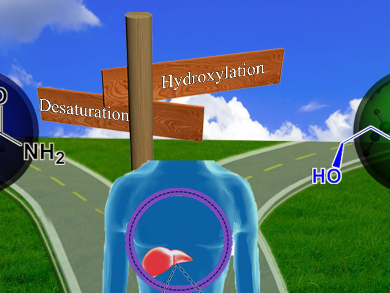Cytochrome P450 enzymes (P450s) are highly versatile biological catalysts in our bodies that are involved in the metabolism of drugs and react with a broad range of substrates. The mechanistic pathways surrounding drug metabolism by P450s produce a large versatility of product patterns, but it is not clear why certain substrates lead to desaturation whereas others solely give hydroxylation products.
Sam de Visser, University of Manchester, UK, Weiping Liu, Zhejiang University, Hangzhou, China, and colleagues have carried out a Density Functional Theory (DFT) and Quantum Mechanics/Molecular Mechanics (QM/MM) study on the factors that determine the regioselectivity of these reactions. From their calculations, the researchers have established multistate reactivity patterns and have discovered that the product distributions differ on each of the spin-state surfaces, i.e., they found spin-selective product formation. Using valence bond (VB) and molecular orbital (MO) theory, they analyzed the electronic and thermochemical factors that determine the bifurcation pathways. They proposed a model that predicts the regioselectivity of aliphatic hydroxylation over desaturation.
The team hopes that the study will be used to develop computer-aided toxic risk assessment of potential carcinogens, which result from desaturation reactions catalyzed by P450 isozymes.
- Drug Metabolism by Cytochrome P450 Enzymes: What Distinguishes the Pathways Leading to Substrate Hydroxylation Over Desaturation?,
Li Ji, Abayomi S. Faponle, Matthew G. Quesne, Mala A. Sainna, Jing Zhang, Alicja Franke, Devesh Kumar, Rudi van Eldik, Weiping Liu, Sam P. de Visser,
Chem. Eur. J. 2015.
DOI: 10.1002/chem.201500329




